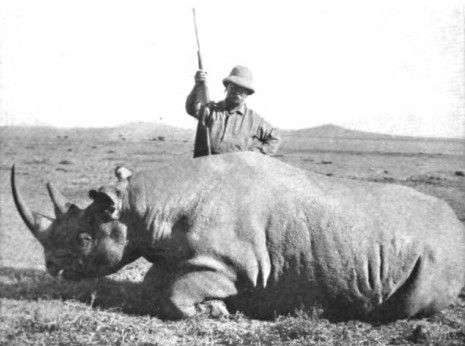-
A study from the University of Cambridge analyzes the evolution of this characteristic feature of rhinos
The rhino horns they have shrunk (and a lot) in the last century. The first photographic portraits of these animals, taken a little over 100 years ago, show that they have long horns. longer than we can currently see. According to the first historical analysis Regarding the evolution of this characteristic feature of rhinos, everything indicates that poaching is responsible for this phenomenon.
The study, led by the University of Cambridge, has analyzed photographs of rhinos captured between the years 1886 and 2018. They also included illustrations of these animals that are more than 500 years old. From there, the team of researchers that has led this study has calculated the size of the horns of these animals in each image and has traced the evolution of this trait in five species (white, black, Indian, Javanese and Sumatran). The analysis of historical records suggests that, indeed, «rhino horns have gradually decreased in size over time«. But why?
The scientists responsible for this analysis put forward the following hypothesis. Rhinos are one of the main targets for poachers. In large part, because its horns reach astronomical values on the black market (especially because, in certain cultures, medicinal and even miraculous capacities are falsely attributed to it). The search for these ‘trophies’, according to the experts, could have caused historically hunters will shoot the longest horned rhino more. This would have favored the reproduction of small-horned rhinos and, by doing so, this trait would thus be passed on to future generations.
«Having smaller horns, in the long run, could be detrimental to their survival.»
«Rhinos develop their horns for different reasons, such as to catch food or to defend themselves against predators, so they believe that having smaller horns, in the long run, could be detrimental to their survival«, highlights Oscar Wilson, author of this analysis and professor at the University of Helsinki, Finland.
historical perception
The study also investigates the perception of these animals throughout history. The first portraits of rhinos, for example, are shown gigantic, threatening beings that persecute humans. In this sense, the experts suggested that this vision was the one that, at least initially, contributed to justify the hunting of these wild animals. At the beginning of the last century, the hunting of these animals was so normalized that even President Theodore Roosevelt posed triumphantly with a black rhinoceros that he had just killed.
Related news
From 1950, the portraits of these animals show a change in trend. The photographs of rhinos were no longer to show off a hunting trophy but, on the contrary, they sought promote its conservation. In this sense, experts suspect that this change coincides with the collapse of european empires. That is, just with the time when African countries achieved their independence and, in turn, European hunters obtained more restrictions to go hunting in Africa.
«We have seen that we can use images from the last centuries to visualize how human attitudes towards wildlife have changed«says Ed Turner, one of the researchers who has led this analysis and a professor in the department of zoology at Cambridge. «In recent decades we have seen more interest in the conservation of rhinos. This can be seen in current images, where either these animals are shown in sanctuaries or their plight in the wild is portrayed,” adds Wilson.

